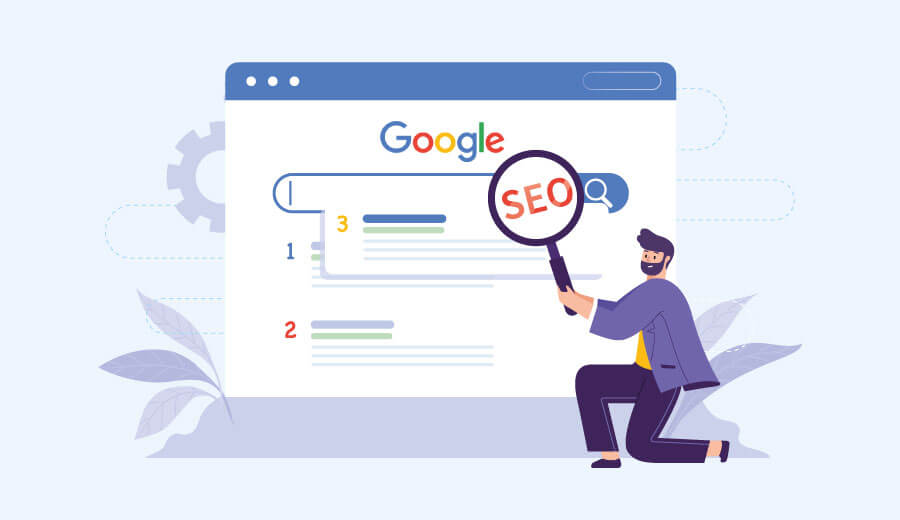If you look into the body of articles about Search Engine Optimization (SEO), you’ll find a fascinating nerdy world of one-upmanship, brinkmanship… and maybe some guys playing electronic Battleship. You’ll read about algorithms, about URLs, social media and even automated keyword generators.
However, much of the world of search is geared toward consumers or is so technical, you need to study SEO courses. If you are a typical B2B marketer, you’re probably facing less of a challenge than a manufacturer of an XBOX game trying to target 14-year old boys. Chances are you have a good idea of who your customer is and efficient channels exist through which you can find your customers. But you still need to come up high in search rankings (ranking indicates how far down the list you are in the editorial or “organic” search).
Here are some tips to help with keyword optimization to start improving your SEO.
What Is Your Customer Looking For?
When a potential customer types words into a search engine, what words is he or she typing? This is the most fundamental piece of the puzzle. You have to be on target with very specific keywords to win the search engine battle. Do you make ‘abrasives’ or do you make ‘depressed center aluminum oxide abrasive grinding wheels for welding’? Do you make ‘magnets’ or do you make ‘NdFeB injection molded magnets’? Do you make ‘sockets’ or do you make ‘high-frequency center probe test sockets’? You get the idea.

Here’s another example. If you google guitar (a favorite subject around The Simon Group), Google finds about 927,000,000 entries with Guitar Center and Wikipedia leading the pack. They are massive websites with high domain authority, lots of content and many people contributing at various levels to the SEO process. Their effort is probably Herculean compared to what many B2B companies can realistically achieve.
But if I type in ‘archtop guitar’, we whittle the field down to 7,040,000 entries, with Wikipedia again leading the pack, followed by archtop.com. But I’m a cagey customer. I don’t want just any archtop guitar; I want a ‘handcrafted archtop guitar’. For that, Google now gives me about 240,000 web sites from which to choose.
Now we’re starting to get to the level where a midsized B2B company might have the resources to achieve significant ranking on Google and other search engines.
The more specific we can be in our keywords/phrases, the more focused we can be on optimizing for them. This shouldn’t be a surprise considering a typical Simon Group embedded computing client would have a webpage optimized for ” VPX SBC” rather than just single board computer (or worse yet: computer). B2B companies, especially the high tech and industrial manufacturers we typically help with marketing, are focusing on a much more niche market with highly defined keywords and phrases to specify their products.
Using Keywords for Optimized SEO
Great. Let’s put it to work. Putting the keywords and search phrases potential customers will be using into the meta description (the unseen code at the beginning of an html document) is still very effective and easy to do using popular website dashboard plugins, like YoastSEO for WordPress. These words should also be used in context in your page title, being sure to follow suggested lengths since search engines only show so many characters (about 50-60 characters).
We see many websites that get the title and meta data right, but fail to ever mention those search terms within the content of the page. The page for industrial thermometers may never actually use the words “industrial thermometers.” Be sure your content doesn’t omit the keywords. Keyword stuffing in the SEO plugin fields doesn’t work. Google, and your customer, are looking for them in context within your main content.
Here’s the scenario. Your page of industrial thermometers has a really cool graphic of an industrial thermometer, with really great typography in the image itself that says “Industrial Thermometers.” The problem is that Google won’t recognize text in an image. You need to include keywords in the page itself, as well as the image alt text, so the search engines see more than just: “blahblahblah.jpg.” So, if the rest of your page says things like: ‘Model 50, 0 to 250° with a 5″ dial’, or ‘Stainless Steel, built to last, accurate to within 0.005%’, but there is no actual text that says “industrial thermometers,” you’re missing a keyword opportunity.
And the best place to include high priority keywords is in the title or headings. Making sure you’re telling your website what text is the title, first and second headings and other similarly important elements of your text. Marking everything as “paragraph” doesn’t give Google a sense of priority. H1 tags help search engines better understand key phrases and prioritize those words.
Measure Twice, Cut Once
Metrics are important. From the simple Google Analytics to Google Search Console and other paid services like SEMrush, the data you can glean from your web metrics program can guide you to better search engineering, more traffic, and ultimately, more sales.
You can track from where visitors come, what keywords they searched to find you, how long they stayed and which pages they read. There’s plenty more data, but these basics give you an idea of how your site interacts with your prospects.
But remember, search engine optimization is a process. You need to monitor your status and be prepared to act as your competitors conduct their own SEO practices. Look at what they’re doing and see how it applies to your site. Are they optimizing keywords, or doing more technical SEO work to improve site speed or increase backlinks? It’s all part of successfully optimizing your site.
